10 tips if it's your dog's first summer
Partager
A dog's first summer is an experience full of discoveries, new smells, and unforgettable moments. But it can also be challenging, especially if it's a puppy or has just joined the family. High temperatures, sun exposure, changes in routine, and outdoor activities require specific care to ensure their well-being.
In this article, we at La Casa de Turrón have prepared a guide with 10 key tips to help make your first summer happy, safe, and comfortable. Whether it's a puppy or a newly adopted adult dog, these tips will help you make the most of this season together.
1. Respect their pace and their need for rest
During the summer, it's normal for your dog to be sleepier, especially if it's a puppy. The heat can increase its fatigue, so it's important not to overstimulate it or force it to exercise when it doesn't feel like it. Let it set its own pace, and if it sleeps more than usual, don't worry: it's perfectly normal.
2. Introduce high temperatures gradually.
If your dog was born in winter or spring, it probably hasn't experienced high temperatures. Therefore, it's important not to suddenly expose it to intense heat. Take it for longer walks during the cooler hours and gradually accustom it to the outdoors, the sun, and different types of terrain.
3. Avoid walks during the hottest hours of the day.
Walks should ideally be done early in the morning and at dusk. Asphalt can reach very high temperatures and burn their paw pads; as we always say, think about whether you would walk barefoot on asphalt. As a general rule, if you can't keep your hand on the ground for 5 seconds without burning yourself, your dog shouldn't either.
4. Constant hydration: more important than ever
Your dog should always have access to clean, fresh water. In summer, their need for hydration increases considerably, especially if they are very active or have long hair. Place several water bowls around the house, change the water several times a day, and always carry a water bottle or a portable bowl with you when you go for walks. Also, check beforehand if there are any water fountains nearby along your route .
5. Beware of heat stroke
Heatstroke is one of the biggest dangers in summer. Learn to recognize its symptoms: excessive panting, weakness, vomiting, very red gums, or even disorientation. If you suspect your dog may be suffering from heatstroke, move them to a cool area, moisten their paw pads and ears with water, and contact your veterinarian immediately.
6. Under no circumstances should you leave him alone in the car
Even with the windows slightly open, the temperature inside a car can rise sharply in a matter of minutes. Leaving a dog alone in a closed vehicle during the summer can be fatal. If you have errands to run, it's best to leave your dog at home.
Before getting into the car, try to ventilate it or turn on the air conditioning.
7. Protect it from the sun and create shaded areas
Dogs, especially those with light-colored fur or pink skin, can get sunburned. If they're going to spend time outdoors, make sure they have access to a shaded area. There are also sunscreens specifically formulated for dogs that can be applied to sensitive areas like the nose, ears, or abdomen.
8. Gradually introduce aquatic activities
If you want your dog to enjoy water games, swimming pools, or even the sea, do it gradually. Some dogs love water from day one, but others need time. Use floating toys, make it fun, and never force it. Also, dry your dog thoroughly afterward to prevent skin problems.
At home, try entertaining him with refreshing activities, such as a bowl of water with floating fruit, a frozen lick mat , or homemade ice cream with fruit and yogurt.
9. Take care of your diet on hot days
It's common for a dog's appetite to decrease in hot weather. Don't worry if your dog eats a little less. You can offer food during the cooler hours of the day and supplement their diet with refreshing snacks like frozen fruit cubes (avoiding any that are toxic). You can also moisten their kibble with cold natural broth to make it more appealing.
10. Adapt your rest space
Check where your dog sleeps or rests. Make sure their bed isn't near sunny windows or poorly ventilated areas. You can offer them a cooling mat or a damp pad on hot days. The important thing is that they have a comfortable, well-ventilated place away from direct heat.
Conclusion
Your dog's first summer can be a wonderful experience if you take a few basic precautions. Keeping an eye on their hydration, avoiding the hottest hours of the day, creating safe spaces, and using common sense are key to ensuring they enjoy a healthy and happy summer.
At La Casa de Turrón , we know that every dog is unique and that accompanying them from their very first steps is a privilege. That's why we design comfortable, durable, and beautiful products, created to care for them in every season. If you want the best for your furry friend this summer, discover our collection of harnesses, feeders, accessories, and tips on our blog and online store.
